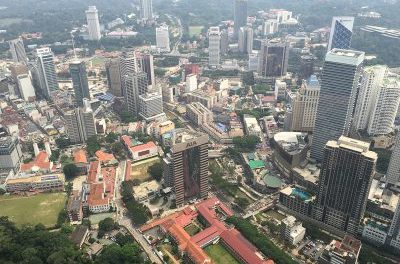Malaysians are 2nd largest buyers of S’pore properties
Malaysians continue to be the second-largest group of buyers of Singapore’s non-landed residential properties by nationality year-to-date, after the Chinese. Quoting Singapore’s Urban Redevelopment Authority (URA), Singapore-based property consultancies Cushman & Wakefield and Savills said Malaysians were the second-largest group after the Chinese for the first half of 2019. The top-five nationalities buying into Singapore’s private housing were the Chinese (440 units), Malaysians (283 units), Indians (152 units), Indonesians (116 units) and Americans (65 units). The report said price growth in the second quarter suggested that the market had stabilised a year after buyers across the board were hit with additional stamp duties, with foreigners having to pay an additional 20% stamp duty from July 2018 onwards. (The Star Online)
IHH takes over Prince Court Medical Centre for RM1.02b
IHH Healthcare Bhd is buying Prince Court Medical Centre Sdn Bhd (PCMC) from its substantial shareholder Khazanah Nasional Bhd for RM1.02 billion cash. The acquisition came slightly more than a year after Khazanah’s wholly-owned unit Pulau Memutik Ventures Sdn Bhd (PMV) bought the hospital operator from Petroliam Nasional Bhd (Petronas) for RM1.086 billion cash. PMV holds a 26.04% stake in IHH. The price that IHH is paying is slightly below Khazanah’s investment costs. IHH noted that the proposed acquisition will allow the healthcare provider to strengthen its position in the Malaysian private healthcare segment and broaden its service offerings. Prince Court is a licensed 277-bed private healthcare facility in the city centre. (The Edge)
Plan to bridge rich-poor gap
Malaysia’s “Shared Prosperity Vision 2021-2030” will set its sights on bridging the rich-poor disparity within the next few years, said Prime Minister Tun Dr Mahathir Mohamad. “We acknowledge there is a disparity in the country. The first is a disparity between states. Some states are very rich while some are poor, so we need to reduce this gap. Another is a disparity between people in the urban and rural areas. Therefore, we need to come up with programmes to increase the income of those in rural areas,” he said. The third kind of disparity is between the rich and poor people in the country, in terms of pay disparity between top executives and lower-ranked staff. Dr Mahathir said in the coming years, there will be more emphasis on skills development as well as Technical and Vocational Education and Training (TVET). The Shared Prosperity Vision is a new economic model which focuses on providing a decent living standard for all Malaysians, as opposed to past models which were more development and mega-project centric. (The Star Online)
Boustead Holdings to exit petrol station business
Boustead Holdings Bhd is in talks to sell its stake in Boustead Petroleum Marketing Sdn Bhd (BPM), which operates petrol stations under the BHPetrol banner, according to sources. It is understood that talks with at least one individual buyer are ongoing, with several other parties interested in the assets or waiting on the sidelines. According to Boustead Holdings’ annual report for FY2018, BPM operates as many as 386 petrol stations and marts selling a variety of things. BPM is 70% controlled by Boustead Petroleum Sdn Bhd and 30% by Lembaga Tabung Angkatan Tentera (LTAT). (The Edge)
Malaysia is world’s second-largest importer of shark fin
Malaysia is the second-largest importer of shark fin, according to a report by wildlife trade organisation Traffic. In it’s report, the NGO on wildlife trade said between 2000 and 2016, Malaysia imported an average of 2,556 tonnes of shark fin per year. Hong Kong was the highest importer with an average of 9,069 tonnes per year while third and fourth places went to China and Singapore (with 1,868 and 1,587 respectively). “These four largest importers of shark fin accounted for 90% of average annual global imports of fins during the same period,” said the report. Malaysia is also ranked eighth in the average catch of sharks per year. Last month, it was reported that Malaysia was among the 40 countries that opposed CITES’ proposal to protect certain species of sharks and rays from exploitation. (The Star Online)






